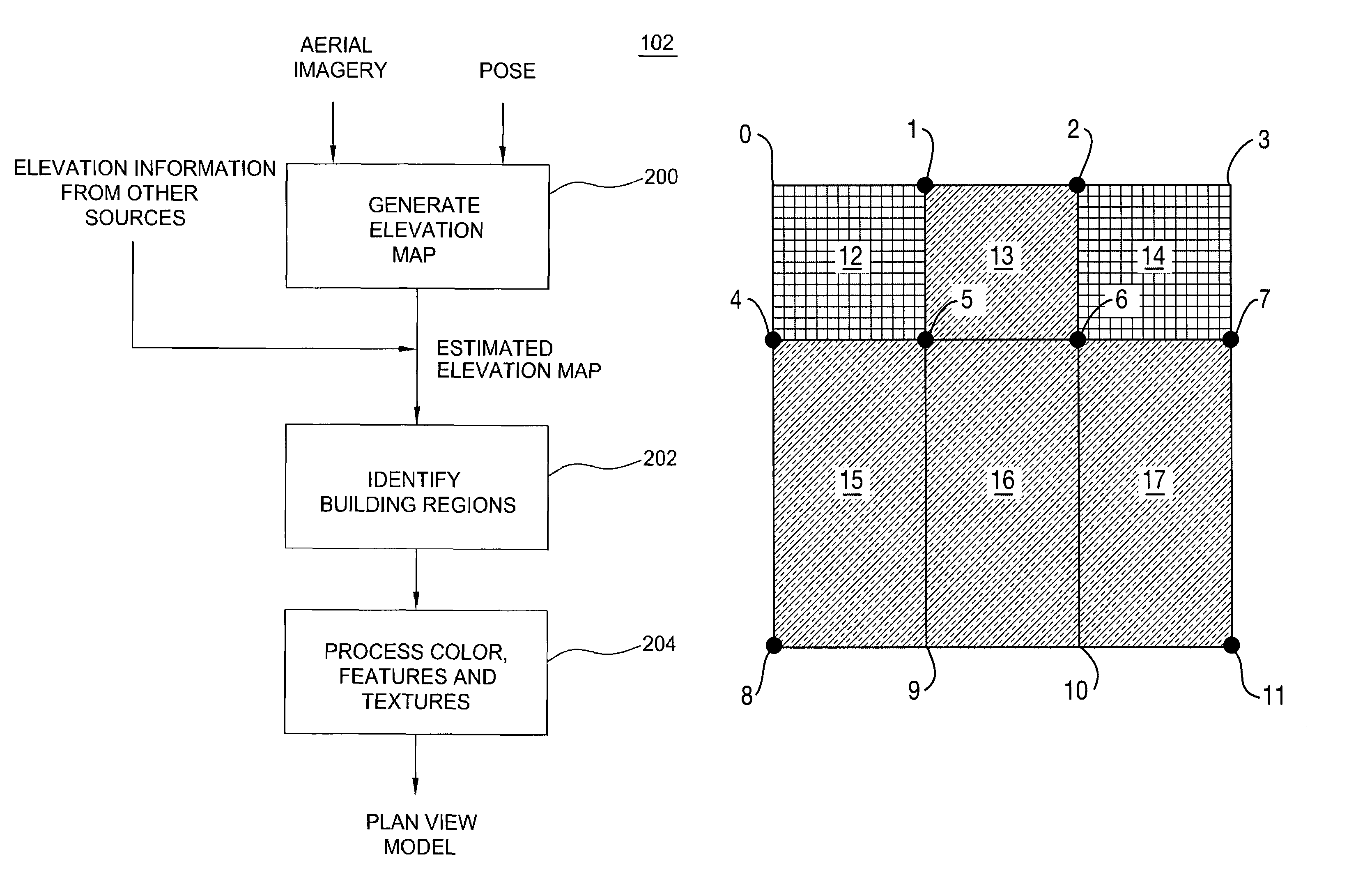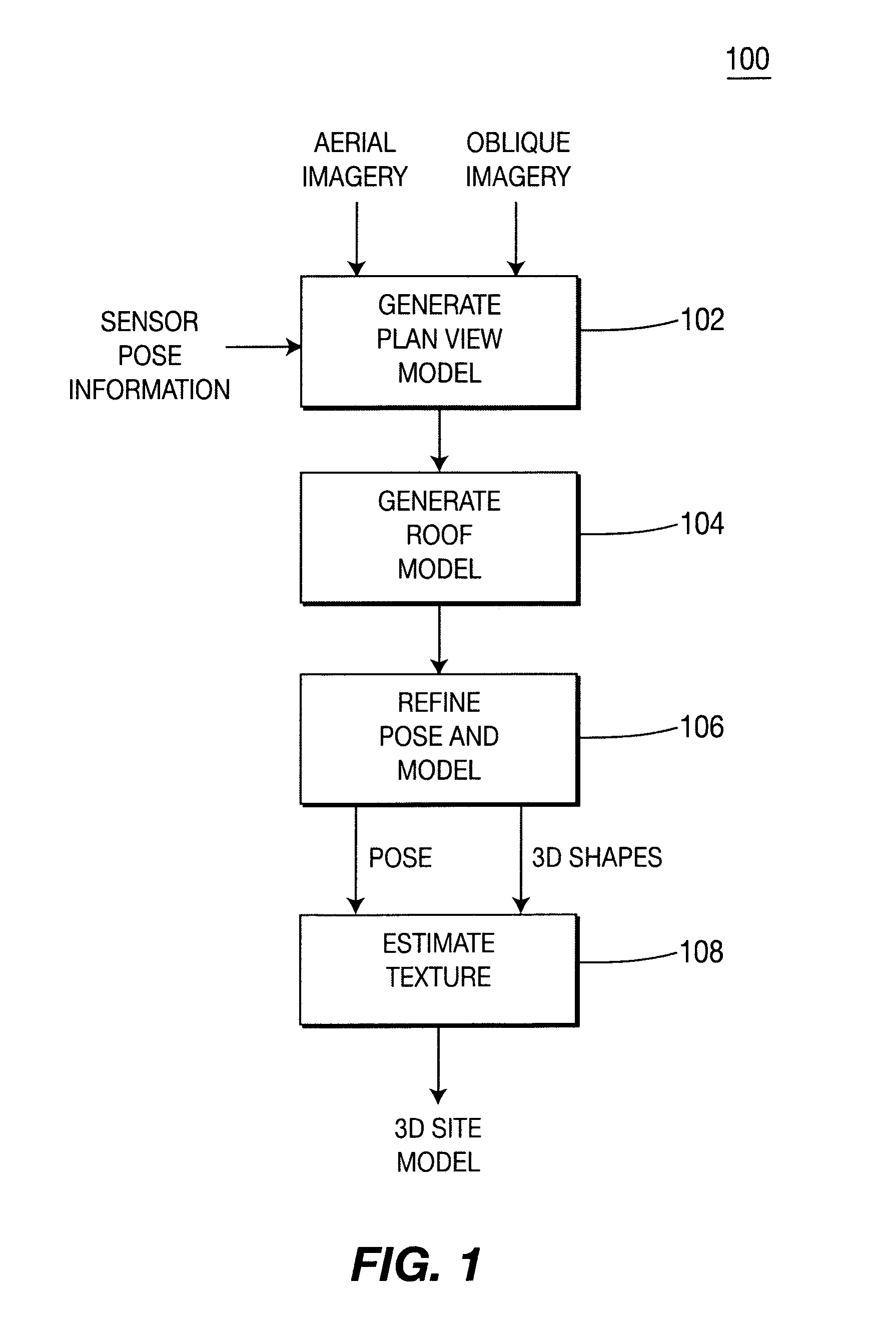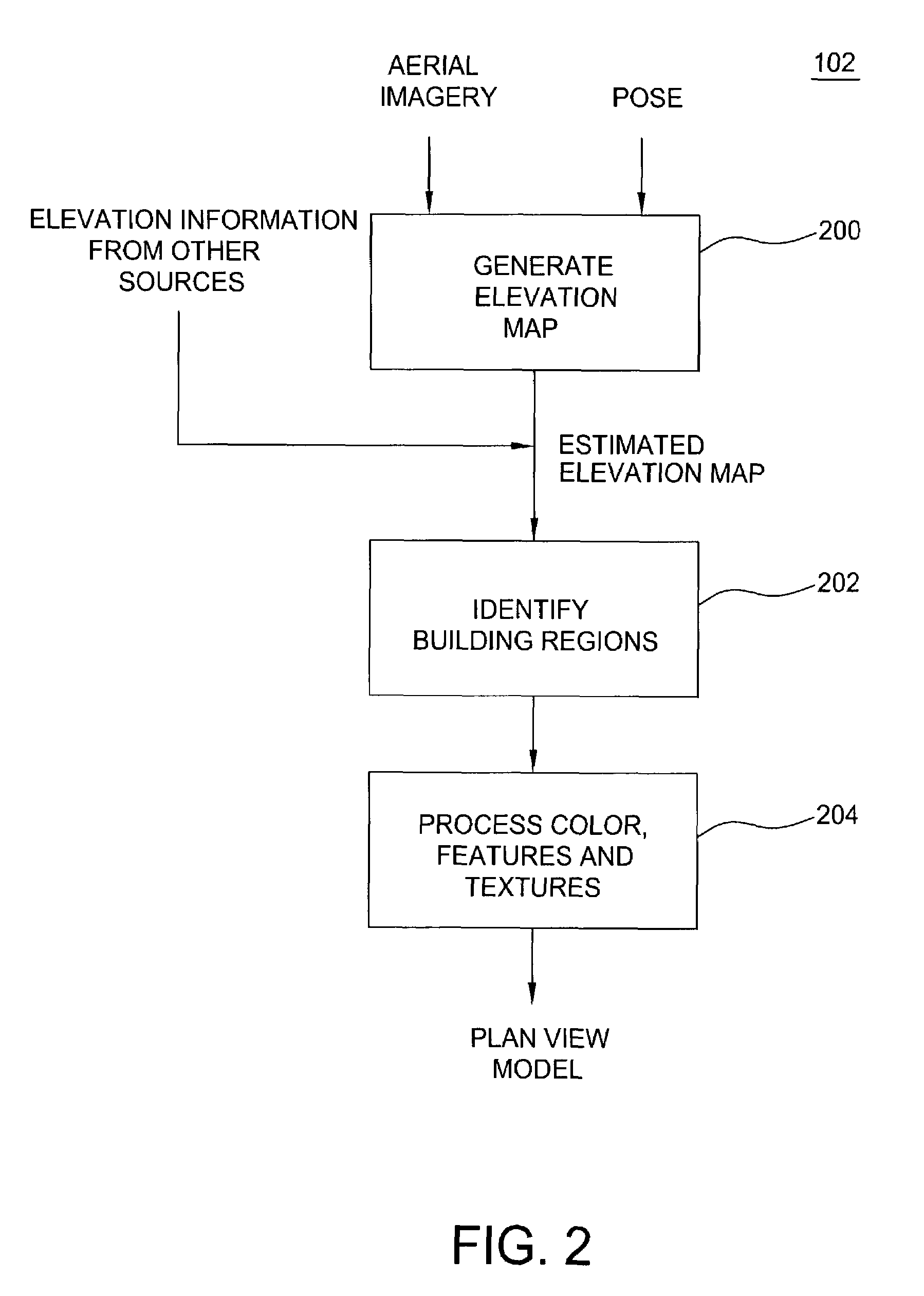Method and apparatus for automatically generating a site model
a technology of automatic generation and site model, applied in the field of image processing, can solve the problems of laborious process of extracting information for creating such a database, lack of sufficient information for complete 3d modeling of a building,
- Summary
- Abstract
- Description
- Claims
- Application Information
AI Technical Summary
Benefits of technology
Problems solved by technology
Method used
Image
Examples
Embodiment Construction
[0021]FIG. 1 depicts a high-level flow diagram of one embodiment of a method 100 of the present invention. The method 100 is supplied with at least one of aerial imagery and oblique imagery of a scene as well as pose information regarding the sensors used to produce both the aerial and oblique imagery. The aerial imagery is produced from above the scene in a substantially vertical orientation, e.g., an aerial video image taken from an airplane. The aerial imagery is generally acquired using large format, film-based still photography, digital scanners or one or more video cameras. Alternatively, the imagery can be produced by creating a mosaic comprising a plurality of small format photographs or video frames.
[0022]The oblique imagery is generated by a film or digital still camera(s) or at least one video camera. However, to produce high quality textured 3D models, the oblique imagery is generally video captured from a continuously moving platform that provides gap-free coverage and ...
PUM
 Login to View More
Login to View More Abstract
Description
Claims
Application Information
 Login to View More
Login to View More - R&D
- Intellectual Property
- Life Sciences
- Materials
- Tech Scout
- Unparalleled Data Quality
- Higher Quality Content
- 60% Fewer Hallucinations
Browse by: Latest US Patents, China's latest patents, Technical Efficacy Thesaurus, Application Domain, Technology Topic, Popular Technical Reports.
© 2025 PatSnap. All rights reserved.Legal|Privacy policy|Modern Slavery Act Transparency Statement|Sitemap|About US| Contact US: help@patsnap.com



